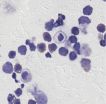(Press-News.org) A year-round preventive drug treatment substantially reduces young children's risk of contracting malaria and poses no serious risk of adverse events, according to a study by researchers funded by the National Institutes of Health.
The findings demonstrate that prolonged treatment given from 6 to 24 months of age is safe and effective for young children, according to the study authors. Year-round preventive measures are badly needed in locations like Uganda, where the study took place, and where malaria rates remain high throughout the year.
Most previous studies using drug treatment to prevent malaria have been limited to areas where there is only a seasonal risk of the disease, during the rainy season, when most malaria episodes in children occur. In those studies, preventive drug treatment was given for only a few months at most. The current study demonstrated that continuous preventive treatment can substantially reduce malaria transmission to infants, who are at greatest risk of severe malaria and death.
The study was conducted by Grant Dorsey, M.D., of the University of California, San Francisco (UCSF) at San Francisco General Hospital, with colleagues from UCSF and the Infectious Diseases Research Collaboration, Kampala, Uganda, and Makerere University College of Health Sciences, also in Kampala. The researchers published their findings online in PLOS Medicine.
"This study has identified an effective measure for reducing the incidence of malaria in children living in an area with high rates of the disease," said Lynne Mofenson, M.D., chief of the Maternal and Pediatric Infectious Disease Branch at the NIH's Eunice Kennedy Shriver National Institute of Child Health and Human Development (NICHD), which provided funding for the study.
Dr. Mofenson said malaria poses a greater threat to children below 3 years of age than to older children. Malaria in children under age 3 is more likely to be fatal than in older children. In younger children, also, the disease may affect the brain and either prove fatal or result in brain damage.
"It's better to try to prevent a potentially fatal illness than it is to wait until the child gets the illness and is at increased risk for dying," Dr. Mofenson added. Older children are considered to be less at risk from malaria because they tend to develop natural immunity against the disease as they get older.
The researchers found that a monthly dose of dihydroartemisinin-piperaquine (DP) was the most effective of three anti-malaria drugs at reducing malaria risk in children from 6 months to 24 months of age. The other two study drugs-- monthly sulfadoxine-pyrethamine (SP) or daily trimethoprim-sulfamethoxozole (TS)-- have been in use longer, and in many locations the malaria-causing parasite has developed a resistance to them. The researchers conducted the study to determine if the benefits of treatment outweighed the potential risk of anemia and other side effects from the drugs.
"When you're giving drugs to prevent the disease, you have a much higher bar for safety," Dr. Dorsey said. "When the drugs are given longer term, you may have an increased risk of side effects to contend with."
Beginning at age 6 months, 393 children from Tororo, Uganda were randomized to one of four groups: monthly DP, monthly SP, or daily TS, or to a control group, which did not receive any preventive drug treatment—which is the standard medical practice in the area. Insecticide-treated mosquito bed nets are a mainstay for reducing the spread of malaria, and all of the families were given nets to put over the children when they slept. By 24 months of age, 352 children were still taking part in the study.
The researchers calculated the study results in terms of a numerical unit known as person years, which takes into account the number of individuals participating in the study and the time each person took part. (A study following 1,000 people for 1 year would contain 1,000 person years of data.) For the children in the DP group, there were 3.02 malaria episodes per person year, 5.21 for the TS group, 6.73 for the SP group, and 6.95 for the control group. Compared to the control group, children in the DP group were 58 percent less likely to develop malaria. Between the groups, there was no difference in rates of anemia and other adverse events that have been associated with the drugs used in the study.
After discontinuing the study drugs at age 24 months, the researchers followed the children until age 3 and found no difference in malaria rates between the groups. According to the study authors, the findings help to allay any concerns resulting from earlier studies that continuous drug treatment might interfere with the children's ability to develop an immune response against malaria, and so make them more likely to get the disease after treatment stops.
"Our study showed that preventive drug treatment can greatly reduce malaria in young children in areas where there are year round high rates of transmission," Dr. Dorsey said. "We believe that this treatment regimen will be of substantial benefit in many parts of the world in need of improved malaria control measures."
INFORMATION:
About the Eunice Kennedy Shriver National Institute of Child Health and Human Development (NICHD):
The NICHD sponsors research on development, before and after birth; maternal, child, and family health; reproductive biology and population issues; and medical rehabilitation. For more information, visit the Institute's website at http://www.nichd.nih.gov/.
About the National Institutes of Health (NIH):
NIH, the nation's medical research agency, includes 27 Institutes and Centers and is a component of the U.S. Department of Health and Human Services. NIH is the primary federal agency conducting and supporting basic, clinical, and translational medical research, and is investigating the causes, treatments, and cures for both common and rare diseases. For more information about NIH and its programs, visit http://www.nih.gov.
Year-round preventive treatment reduces malaria risk in young children
NIH-funded study shows benefit of monthly treatment
2014-08-05
ELSE PRESS RELEASES FROM THIS DATE:
How spiders spin silk
2014-08-05
Spider silk is an impressive material; lightweight and stretchy yet stronger than steel. But the challenge that spiders face to produce this substance is even more formidable. Silk proteins, called spidroins, must convert from a soluble form to solid fibers at ambient temperatures, with water as a solvent, and at high speed. How do spiders achieve this astounding feat? In new research publishing in the open access journal PLOS Biology on August 5, Anna Rising and Jan Johansson show how the silk formation process is regulated. The work was done at the Swedish University ...
In search for Alzheimer's drug, a major STEP forward
2014-08-05
Researchers at Yale School of Medicine have discovered a new drug compound that may help reverse the cognitive deficits of Alzheimer's disease. Their findings are publishing on August 5 in the open access journal PLOS Biology.
The compound, TC-2153, inhibits the negative effects of a protein called STriatal-Enriched tyrosine Phosphatase (STEP), which is key to regulating learning and memory. These cognitive functions are impaired in Alzheimer's.
"Decreasing STEP levels reversed the effects of Alzheimer's disease in mice," said lead author Paul Lombroso, M.D., professor ...
Pyruvate oxidation is critical determinant of pancreatic islet number and β-cell mass
2014-08-05
Researchers at the University at Buffalo, led by Dr. Mulchand Patel and also at Lawson Health Research Institute and Western Ontario, London, Canada, led by Dr. David Hill, collaboratively evaluated the role of the mitochondrial multienzyme pyruvate dehydrogenase complex in the regulation of pancreatic β-cell development and maturation in the immediate postnatal period in mice. This study, reported in the August 2014 issue of Experimental Biology and Medicine, demonstrated that the pyruvate dehydrogenase complex is not only required for insulin gene expression and ...
Butterflies change wing color in new Yale research
2014-08-05
Yale University scientists have chosen the most fleeting of mediums for their groundbreaking work on biomimicry: They've changed the color of butterfly wings.
In so doing, they produced the first structural color change in an animal by influencing evolution. The discovery may have implications for physicists and engineers trying to use evolutionary principles in the design of new materials and devices.
The research appears this week in the journal Proceedings of the National Academy of Sciences.
"What we did was to imagine a new target color for the wings of a butterfly, ...
Seamless gene correction of beta-thalassemia mutations in patient-specific cells
2014-08-05
August 5, 2014 – A major hurdle in gene therapy is the efficient integration of a corrected gene into a patient's genome without mutating off-target sites. In a paper published today in Genome Research, scientists have used CRISPR/Cas genome editing technology to seamlessly and efficiently correct disease-causing mutations in cells from patients with β-thalassemia.
β-thalassemia results from inherited DNA mutations in the hemoglobin beta (HBB) gene, resulting in reduced HBB expression in red blood cells and, in the most severe forms, anemia. The only established ...
NASA sees Tropical Storm Julio as part of a heated Eastern Pacific
2014-08-05
The Eastern Pacific Ocean has been warm this springtime, and those warmer waters have contributed to the development of storms like Tropical Storm Julio and Hurricane Iselle.
"Ocean temperatures in the Eastern Tropical Pacific were heated up because of the strong Kelvin wave activity this spring. Although the initial excitement of an impending El Nino has quieted down, these warmer waters have caused an early and active hurricane season," said Bill Patzert, Climatologist at NASA's Jet Propulsion Laboratory in Pasadena, California.
"Kelvin waves" are massive ripples ...
Grizzly research offers surprising insights into diabetes-obesity link
2014-08-05
While diabetes rates are on the rise and are having serious effects on millions of people's health, researchers studying grizzly bears have now discovered a natural state of diabetes that serves a real biological purpose and is also reversible. Investigators reporting in the August 5 issue of the Cell Press journal Cell Metabolism note that grizzly bears are obese but not diabetic in the fall, become diabetic only weeks later in hibernation, and then somehow become "cured" of diabetes when they wake up in the spring. The research reveals how natural biology, through evolutionary ...
No apparent link between sleep apnea and cancer: Large study
2014-08-05
Obstructive sleep apnea, in which people stop breathing for short periods while sleeping, affects about 5% of Canadian adults aged 45 years or older and can negatively affect health. More than 1 in 5 adult Canadians have risk factors for sleep apnea such as being overweight, being male and having diabetes, chronic nasal congestion or other health conditions.
Studies have postulated that obstructive sleep apnea may be linked to cancer because of low levels of oxygen in the blood.
"There is a need for a sufficiently large cohort study with a long enough follow-up to allow ...
Common chemical in mothers may negatively affect the IQ of their unborn children
2014-08-05
(Boston) -- In some women abnormally high levels of a common and pervasive chemical may lead to adverse effects in their offspring. The study, published recently in the Journal of Clinical Endocrinology & Metabolism, is the first of its kind to shed light on the possible harmful side effects of perchlorate in mothers and their children.
Using data from the Controlled Antenatal Thyroid Study (CATS) cohort, researchers at Boston University School of Medicine (BUSM) and Cardiff University studied the effect of perchlorate, an environmental contaminant found in many foods ...
Story tips from the Department of Energy's Oak Ridge National Laboratory, August 2014
2014-08-05
To arrange for an interview with a researcher, please contact the Communications staff member identified at the end of each tip. For more information on ORNL and its research and development activities, please refer to one of our media contacts. If you have a general media-related question or comment, you can send it to news@ornl.gov.
MATERIALS – Transparent ballistic results …
Glass used for military vehicle windshields is being put to the test by an Oak Ridge National Laboratory team evaluating different formulations for mechanical strength, high pressure and shock ...
LAST 30 PRESS RELEASES:
Australian team discover why quantum computers have memory problems over time
What determines the fate of a T cell?
Candida auris: genetic process revealed which could be treatment target for deadly fungal disease
Groundbreaking discovery turns household plastic recycling into anti-cancer medication
Blocking a key inflammatory pathway improves liver structure and vascular function in cirrhosis, study finds
Continuous spread: Raccoon roundworm detected in nine European countries
HKUST Engineering researchers developed a novel photodetector to enhance the performance of on-chip light monitoring
Strategic river sensors could have forewarned of Texas Camp flood disaster
Drone sampling of whale breath reveals first evidence of potentially deadly virus in Arctic
Roman soldiers defending Hadrian’s Wall infected by parasites, study finds
Pinochet’s prisoners were tormented with music but still found solace in it, a new book reveals
Fertility remains high in rural Tanzania despite access to family planning
AI-assisted device can improve autism care access
Kinetic careers
Uncovering how parasitic plants avoid attacking themselves to improve crop resistance
Nanoparticle vaccine strategy could protect against Ebola and other deadly filoviruses
Study finds brain care score can predict risk of stroke across racial groups
Key lung immune cells can intensify allergic reactions
Do hormones explain why women experience more gut pain?
New materials conduct ions in solids as easily as in liquids
Breakthrough of the Year: Renewable energy begins to eclipse fossil fuel-based sources
LLM use is reshaping scientific enterprise by increasing output, reducing quality and more
Introducing LightGen, a chip for ultra-fast, ultra-efficient generative AI
Astronomers see fireworks from violent collisions around nearby star
ACC/AHA issue new guideline on managing congenital heart disease in adults
Cosmic crash caught on camera
Is talented youth nurtured the wrong way? New study shows: top performers develop differently than assumed
Ants: An untapped resource in the development of antibiotics?
Archaeologists use AI to create prehistoric video game
Mitochondria migrate toward the cell membrane in response to high glucose levels
[Press-News.org] Year-round preventive treatment reduces malaria risk in young childrenNIH-funded study shows benefit of monthly treatment



